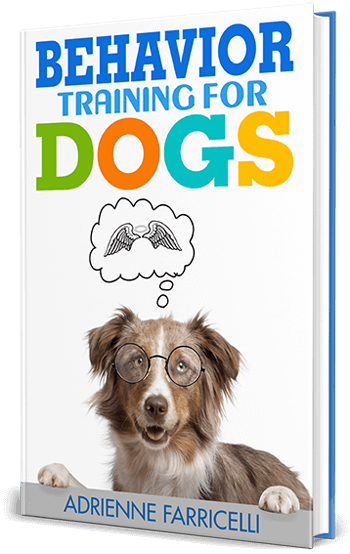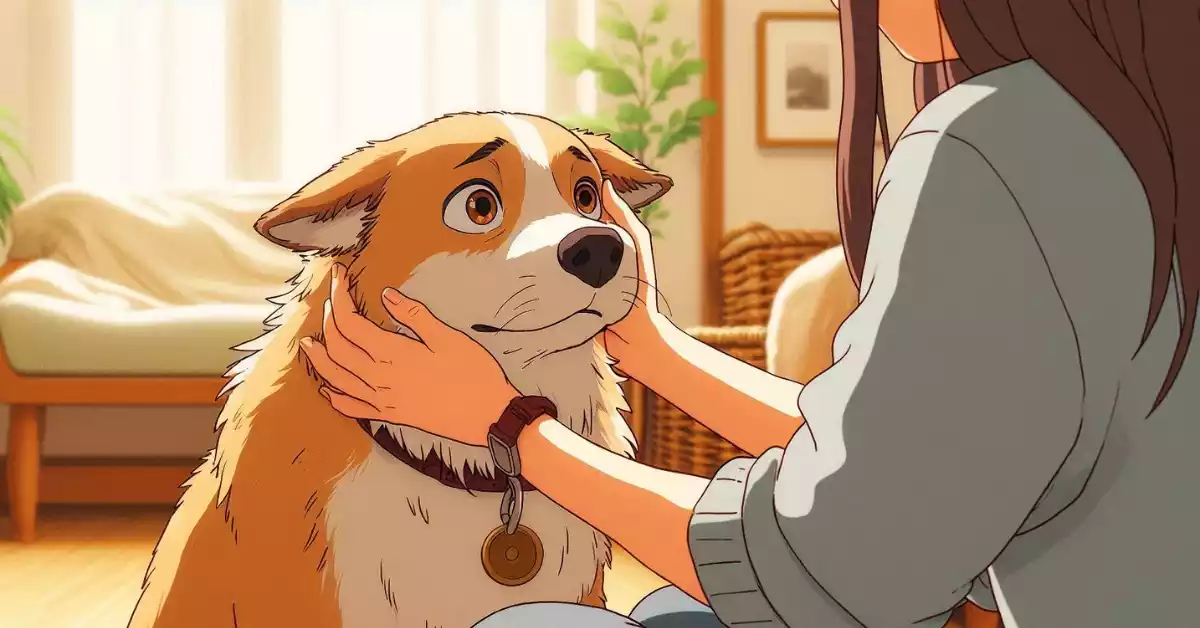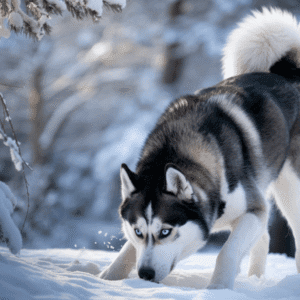
Have you seen your dog act scared during storms or pace a lot? Anxiety is more than just behavior; it’s a sign your pet needs support. Each bark, whine, or shaking paw tells a story of stress. The American Kennel Club (AKC) says over 79% of dogs show anxiety signs, from fear of being left alone to noise phobias.
But you’re not alone. This guide shares effective dog training for anxiety methods used by experts. These methods help turn panic into peace.
Imagine your dog relaxing during fireworks instead of shaking. Picture them greeting visitors calmly instead of barking fiercely. This isn’t just wishful thinking—it’s achievable with patience and the right strategies.
Dog training for anxiety focuses on understanding triggers, rebuilding trust, and teaching coping skills. Every yawn, deep breath, or calm sit is a step toward healing.
Key Takeaways
- Identify triggers like loud noises or loneliness to address anxiety roots.
- Consistent routines reduce confusion and build your dog’s confidence.
- Positive rewards strengthen good behaviors faster than punishment.
- Professional guidance from resources like the AKC Helpline ensures safe progress.
- Simple tools like calming wraps or soothing music can support training efforts.
Understanding Canine Anxiety
Effective canine anxiety training begins with understanding your dog’s stress. Dogs can get anxious for many reasons, like past traumas or changes in their environment. Knowing these helps you meet their needs sooner.
“Anxiety in dogs often mirrors human stress—without proper intervention, it can worsen over time.” — Dr. Emily Carter, Certified Canine Behaviorist

Common Causes of Anxiety in Dogs
- Poor socialization: Puppies not exposed to new sounds or people may develop fears as adults.
- Environmental changes: Moving homes or new family members can trigger stress.
- Trauma: Past neglect or loud noises like fireworks can leave lasting emotional scars.
Behavioral Signs to Watch For
Watch for these signs during canine anxiety training:
- Persistent pacing or shaking
- Excessive barking or whining
- Destroyed furniture or chewed items
- Avoidance of familiar people or places
Spotting these signs early through canine anxiety training lets you act fast. This helps your dog become calmer and more confident.
Recognizing Anxiety Symptoms in Your Dog

Knowing the signs of anxiety helps you act early. Watch for subtle changes in your dog’s behavior. Early recognition makes calming techniques for anxious dogs more effective.
- Lip licking or yawning without reason
- Pulled back ears or flattened body posture
- Excessive panting or shaking
- Withdrawal from usual activities
| Normal Behavior | Anxious Behavior |
|---|---|
| Relaxed posture | Crouched or trembling |
| Playful interactions | Avoiding contact |
| Steady breathing | Rapid panting |
Changes in routine or environment often trigger these reactions. If your dog hides during loud noises or freezes when approached, these are red flags. Ignoring these signs delays the use of calming techniques for anxious dogs, reducing their effectiveness.
Document unusual behaviors. Note when they occur—during walks, at home, or around strangers. This helps tailor strategies to your dog’s needs. Early action ensures you can apply the right calming techniques for anxious dogs before stress escalates.
Setting Up a Calm Environment

Effective anxiety relief methods for dogs often start with their surroundings. A stress-free home environment helps anxious pets feel secure. Begin by designing a dedicated area where your dog can retreat when overwhelmed.
Creating a Safe and Quiet Space
Choose a quiet room or corner free from loud noises. Use cozy bedding, soft lighting, and familiar toys. Consider adding a crate lined with blankets for extra comfort. Brands like Kuranda offer durable resting spots that double as safe zones.
Let your dog explore this space without pressure—consistency helps them view it as a sanctuary.
Noise Reduction Techniques
- Use white noise machines or calming music playlists. Studies show classical music lowers heart rates in stressed dogs.
- Block outside sounds with sound-dampening curtains or window treatments.
- During thunderstorms, close windows and draw blinds to minimize visual triggers.
Combining these steps creates a foundation for anxiety relief methods for dogs. Small adjustments to lighting, sound, and layout can make a big difference. Observe your dog’s reactions and adjust the space gradually to encourage relaxation.
Effective Dog Training for Anxiety Techniques

Behavioral therapy for anxious dogs focuses on building confidence and calmness. Start by creating routines your dog can count on. Unpredictability can make them more stressed. This section shares effective training strategies to help your dog feel better, based on advice from the AKC GoodDog Helpline.
Consistency is Key
Training at the same time every day helps build trust. Speak calmly and repeat exercises until your dog improves. For example, do 10-minute obedience drills twice a day, using treats as rewards.
Positive Reinforcement Strategies
- Give a high-value treat when your dog stays calm in stressful situations, like thunderstorms.
- Verbal praise like “Good boy/girl!” when they behave calmly.
- Use clicker training to mark good behavior right away.
Gradual Exposure and Desensitization
Start introducing things that make your dog anxious slowly. For noise sensitivity:
- Play recorded thunder sounds at a very low volume.
- Only increase the volume if your dog stays calm for 5 minutes.
- Stop if your dog shows fear.
| Technique | Key Action | Goal |
|---|---|---|
| Consistency | Fixed training schedule | Build predictability |
| Positive Reinforcement | Reward calm responses | Encourage desired behaviors |
| Gradual Exposure | Systematic trigger introduction | Reduce fear responses |
“Consistent, reward-based training is the cornerstone of managing canine anxiety.” – AKC GoodDog Helpline
Implementing Behavioral Therapy for Anxious Dogs

Behavioral therapy helps dogs deal with stress by following set routines. Experts suggest mixing exercise, mental games, and slowly introducing them to things that scare them. Here’s how to begin:
“Consistent therapy sessions build trust and reduce fear responses over time,” says Dr. Emily Carter, a certified animal behaviorist.
Key techniques include:
- Exercise routines: Daily walks or playtime to burn energy and calm nerves
- Desensitization drills: Gradually exposing your dog to mild stressors while rewarding calmness
- Enrichment activities: Puzzles or scent games to stimulate focus
| Method | Goal | Frequency |
|---|---|---|
| Desensitization | Reduce fear of triggers | 3-5 sessions/week |
| Play therapy | Build confidence | Every other day |
| Sensory stimulation | Encourage positive associations | 10-15 minutes daily |
Make a schedule that includes these methods. For example, start with 10 minutes of puzzle toys in the morning, then a short walk. Keep track of progress each week to tweak your plan. Use treats or praise to reward good behavior.
Consistency is key. Add these ways to help anxious dogs slowly to avoid stressing them out. Celebrate small wins to keep you and your pet excited about progress.
Using Calming Tools and Products

Using the right tools with training tips for anxious canines can help your dog relax. These products work well with techniques like desensitization. Together, they create a calming routine for your dog.
“Anxiety wraps and aromatherapy are proven to reduce stress when used with consistent training methods.” – American Veterinary Society of Animal Behavior
Anxiety Wraps and Vests
Pressure wraps, like the Thundershirt, feel like a gentle hug. They apply constant pressure to lower your dog’s heart rate. Choose ones with adjustable straps and breathable fabrics.
Start with short sessions and reward calm behavior. This helps your dog associate the tool with good feelings.

Aromatherapy for Dogs
Scents like lavender and synthetic pheromones (e.g., Adaptil) can calm your dog. Use diffusers in their safe space or spritz collars before stressful events. Always dilute essential oils to 1-2% to avoid irritation.
Use these tools with daily training tips for anxious canines. For example, pair aromatherapy with gradual exposure exercises. Watch how your dog responds and adjust as needed for your long-term plan.
Training Tips for Anxious Canines

Small steps and patience are key to managing anxiety in dogs. Start by adding daily interactive play to distract from stress. Try these proven methods to build confidence:
- Interactive Puzzle Toys: Use food-dispensing toys during stressful times to redirect focus. Brands like Outward Hound’s Hide-a-Squirrel encourage mental engagement.
- Structured Routine: Keep feeding, walks, and bedtime consistent. Predictability reduces uncertainty for anxious pets.
- Short Training Sessions: Practice calm commands (e.g., “Settle”) in 5-10 minute intervals. Reward calm behavior with treats.
| Activity | Benefit |
|---|---|
| Sniffari walks | Reduces hyperactivity by engaging natural instincts |
| Calming music playlists | Steadies heart rate during thunderstorms or fireworks |
A certified trainer advises:
“Consistency in routine and positive rewards helps dogs feel secure over time.”
Add 10-minute massage sessions using gentle strokes to lower stress hormones. Combine these tips with earlier strategies like desensitization for a holistic approach. Every small success reinforces trust between you and your pet.
Monitoring Progress and Adjusting Strategies

It’s key to keep an eye on how your dog is doing to manage controlling dog anxiety. Small steps forward might not be obvious without regular checks. Use a calendar or app to track changes every day.
Tracking Behavioral Changes
- Keep a behavior log noting when anxiety behaviors increase or decrease.
- Record environmental factors like loud noises or visitors to identify triggers.
- Watch for positive shifts, such as calmer reactions to stressful situations.
Revising Training Techniques Over Time
What works today may not always work. Adjust methods based on your dog’s responses:
- Slowly increase challenge levels if progress stalls.
- Swap rewards or routines if motivation fades.
- Seek professional advice if anxiety worsens despite efforts.
Being flexible means your approach can change as your dog grows and their needs evolve. Celebrate the small victories to keep your spirits high.
🐾 Calm Your Anxious Dog with Science-Backed Training!

Tired of seeing your pup stressed? Brain Training for Dogs uses gentle, certified methods to reduce anxiety fast:
✅ CPDT-KA expert guidance
✅ 21 brain games to build confidence
✅ Step-by-step video lessons
✅ 60-day guarantee – risk-free!
“My dog’s anxiety improved dramatically with the ‘Look at That’ game!” – Joanna A.
🔥 Limited-Time Offer: Only $67
👉 Transform Your Dog Now! 👈
Conclusion
Managing your dog’s anxiety is a mix of training, changing their environment, and being patient. Safe spaces, positive reinforcement, and gradual exposure are effective ways to reduce stress. Tools like anxiety wraps or aromatherapy can also help.
For expert advice, check out the AKC GoodDog Helpline or talk to professional trainers. Keeping track of your dog’s progress and adjusting your methods is key. This way, you help your dog overcome anxiety and live a happier life.
If you face challenges, don’t hesitate to ask a vet or certified behaviorist for help. Consistent care and understanding are crucial for your dog’s well-being. With the right approach, you can make your dog happier and more relaxed.
FAQ
What are the common causes of anxiety in dogs?
Dogs can get anxious from loud noises, being left alone, or changes in their home. Medical problems, not socializing enough, and past traumas also cause anxiety. Knowing these reasons helps you manage your dog’s stress better.
How can I recognize if my dog is anxious?
Look for signs like too much barking, chewing, or pacing. Also, watch for nervous behaviors like lip licking, cowering, or hiding. Spotting these signs early lets you start training to help your dog feel better.
What environmental adjustments can I make to help my anxious dog?
Make a quiet, safe spot in your home. Use noise-reducing methods and give comfort items like blankets. These steps can lessen anxiety and help your dog relax.
What are some effective training techniques for anxious canines?
Use consistent training methods and reward calm behavior. Gradually introduce your dog to things that make them anxious in a controlled way. This helps them feel more secure.
How does behavioral therapy help dogs with anxiety?
Behavioral therapy uses specific strategies to change how your dog reacts to anxiety. It includes structured exercises and behavior changes that fit into your dog’s training.
What calming tools can I use to help my anxious dog?
Tools like anxiety wraps, vests, and aromatherapy can comfort your dog. They work alongside training to make your dog feel calmer and more relaxed.
How can I track my dog’s progress in managing anxiety?
Watch and note any changes in your dog’s behavior over time. Keeping a journal helps you see what’s working and when you might need to change your training.
Should I consult a professional if my dog’s anxiety doesn’t improve?
Yes, if your dog’s anxiety doesn’t get better, get help from a vet or a certified dog trainer. They can offer specific advice for your dog’s needs.


![Read more about the article How to Train Your Dog to Come When Called: 7 Proven Techniques That Work [2024 Guide]](https://dogtoysandaccessories.com/wp-content/uploads/2024/10/Dog-running-towards-owner-in-a-park-after-being-called-300x300.webp)

facebook ads account for sale accounts market guaranteed accounts